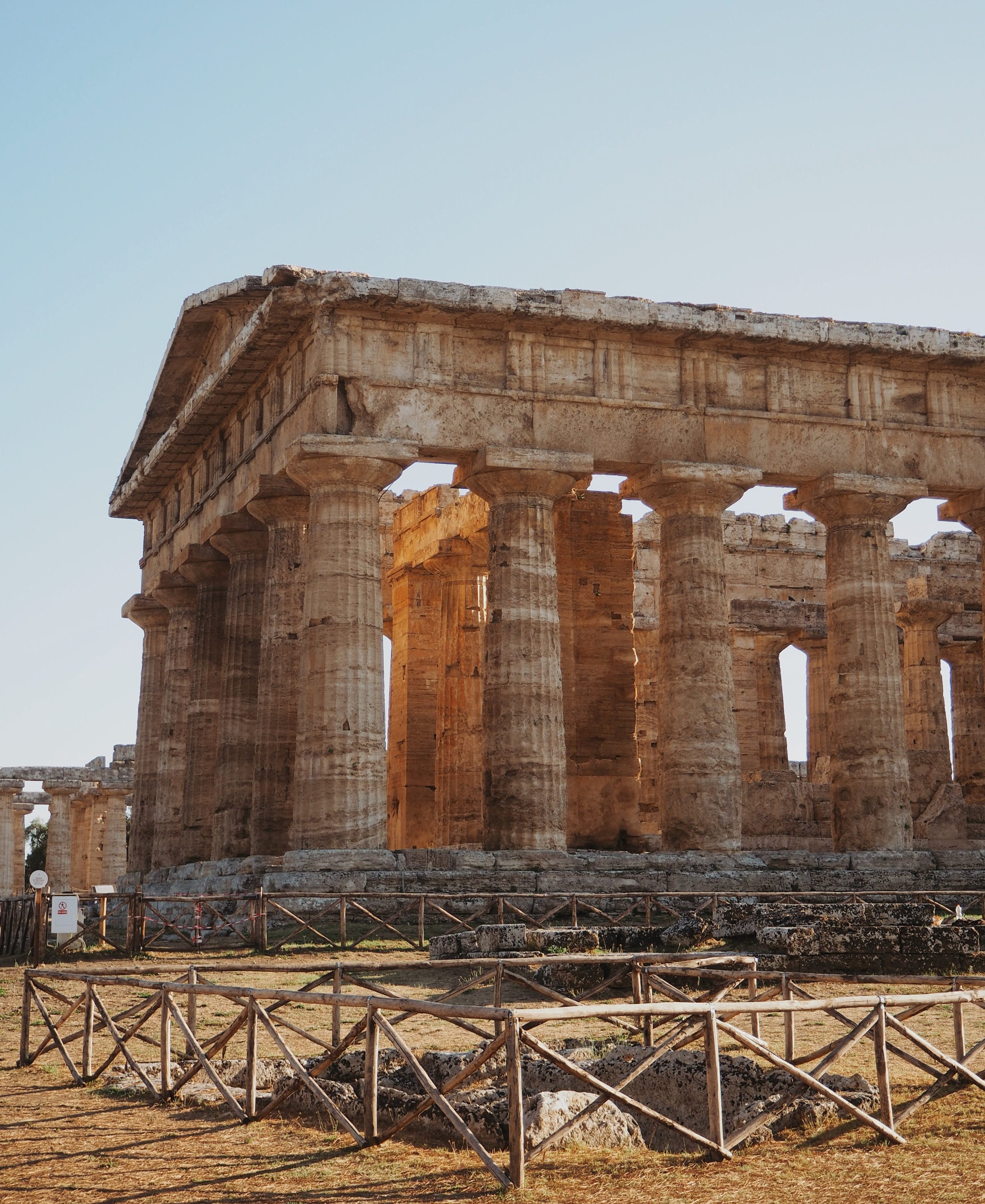The Temple of Poseidon, also known as the second temple of Hera, is an ancient Greek temple located in Paestum, Italy. It is one of the most well-preserved Doric order Greek temples in existence. Constructed around 450 BC, the temple was dedicated to the Greek god Poseidon, the god of the sea, earthquakes, and horses. However, due to a historical mix-up, it was wrongly attributed to Poseidon and is actually a temple dedicated to Hera, the wife of Zeus and goddess of women, childbirth, family, and marriage. The temple is a significant representation of the grandeur and sophistication of Greek architecture and culture.
Get your dose of History via Email
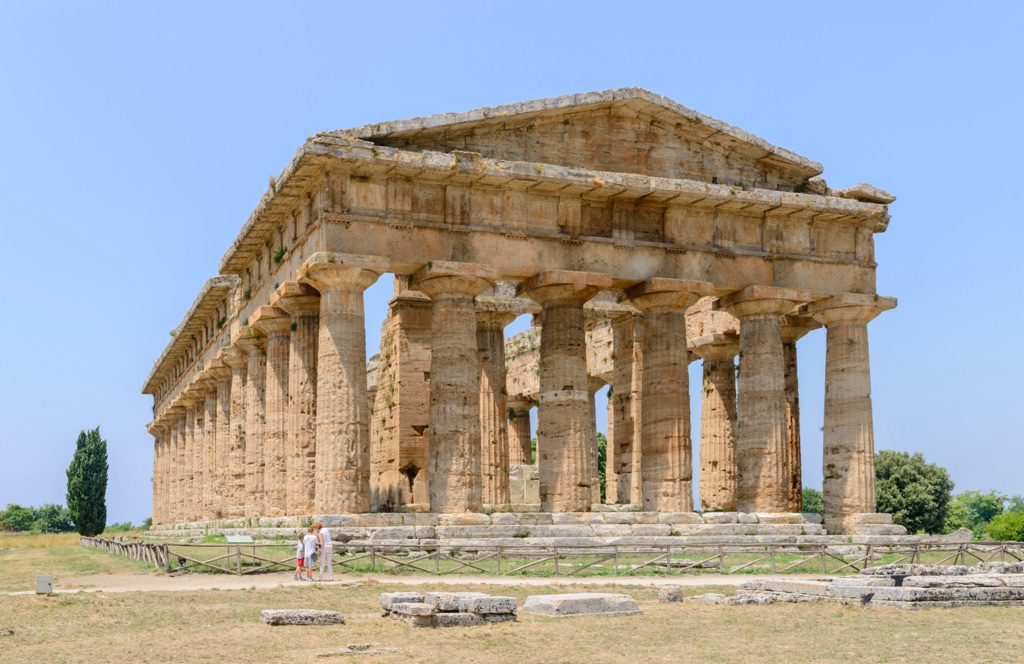
What is the historical significance of the Temple of Poseidon in Paestum and what role did it play in ancient Greek culture and religion?
The Temple of Poseidon in Paestum holds immense historical significance as it is one of the most well-preserved Greek temples from the Doric period. It was a key religious site in ancient Greece, serving as a place of worship for the god Poseidon. The temple’s location in Paestum, a major ancient Greek city, indicates the importance of Poseidon in Greek culture and religion.
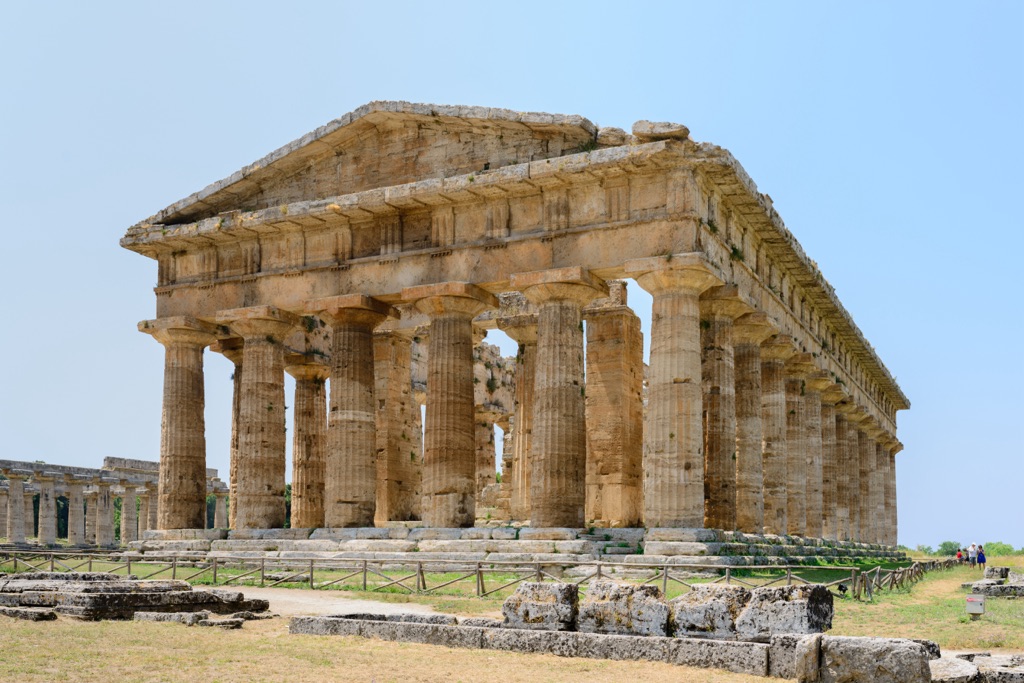
In ancient Greek culture, Poseidon was revered as the god of the sea, earthquakes, and horses. As such, the temple would have been a site of major religious ceremonies and rituals related to these aspects of nature. It is likely that sacrifices and offerings were made at the temple to appease Poseidon and seek his protection.
The temple also played a significant role in the social and cultural life of Paestum. It was a gathering place for the community, where citizens could participate in religious ceremonies and festivals. The temple’s grandeur and architectural sophistication reflect the cultural and artistic achievements of ancient Greece.
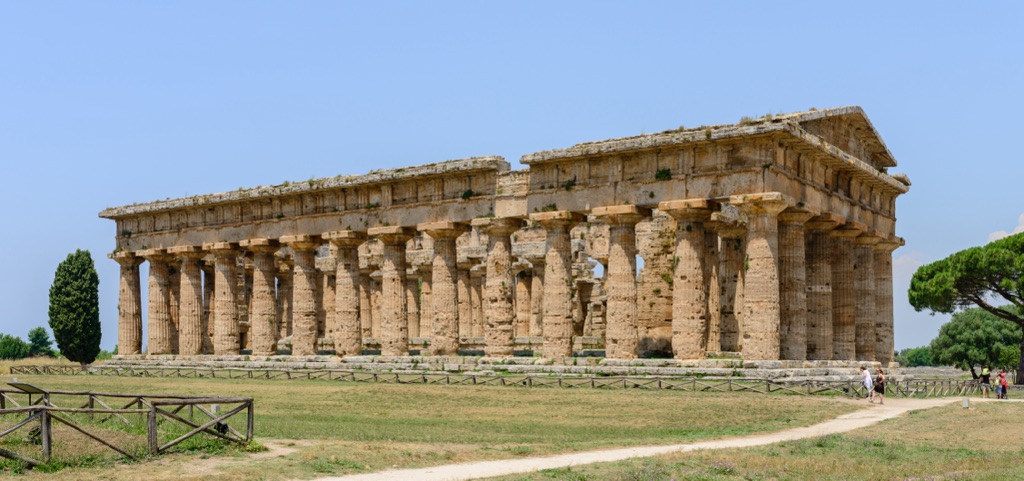
What are some of the key architectural features and techniques used in the construction of the Temple of Poseidon in Paestum?
The Temple of Poseidon in Paestum is a prime example of Doric architecture, the oldest and simplest of the three orders of classical Greek architecture. The temple features a rectangular floor plan with a peristyle, a columned porch surrounding the building. It is composed of 6 columns at the short sides and 14 columns at the long sides.
One of the key architectural features of the temple is the Doric column, characterized by its fluted shaft and simple, undecorated capital. The columns are slightly tapered, becoming narrower towards the top, a technique known as entasis that creates an optical illusion of straight lines.
The temple also features a pronaos, or front porch, and an opisthodomos, or back porch, both surrounded by two columns in antis, meaning between two walls. The cella, or inner chamber, would have housed the statue of the deity to whom the temple was dedicated.
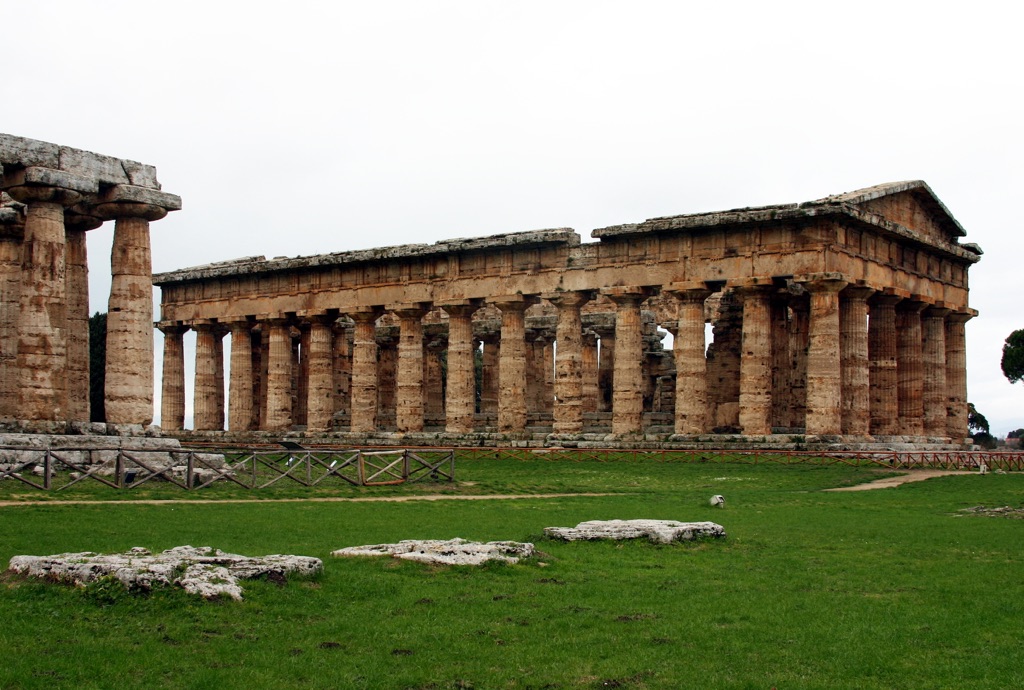
How is the archaeological site of the Temple of Poseidon in Paestum being preserved and protected for future generations?
The archaeological site of the Temple of Poseidon in Paestum is currently under the protection of the Italian Ministry of Cultural Heritage and Activities. The site is regularly monitored and maintained to ensure its preservation. This includes routine cleaning and restoration work to repair any damage caused by weathering or human activity.
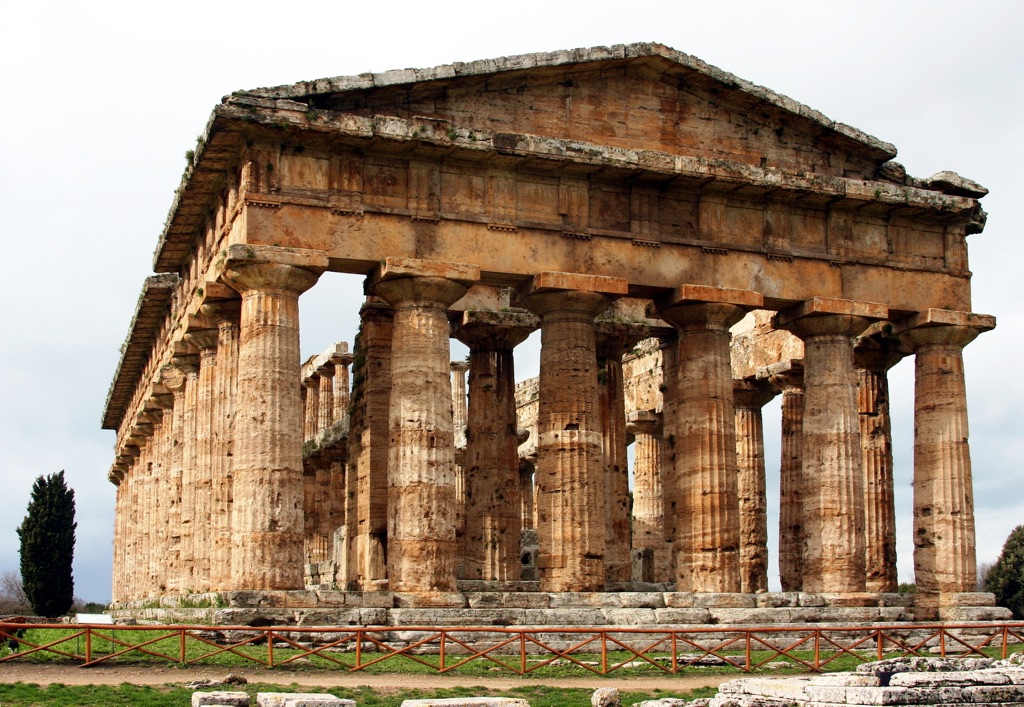
In addition to physical preservation efforts, the site is also protected by laws and regulations that prohibit unauthorized excavation, alteration, or destruction of the site. These measures are enforced by the Italian Carabinieri Department for the Protection of Cultural Heritage.
The site is also part of the UNESCO World Heritage List, which recognizes its outstanding universal value and commits to its preservation for future generations. As a World Heritage site, the Temple of Poseidon receives international protection and support for its conservation.
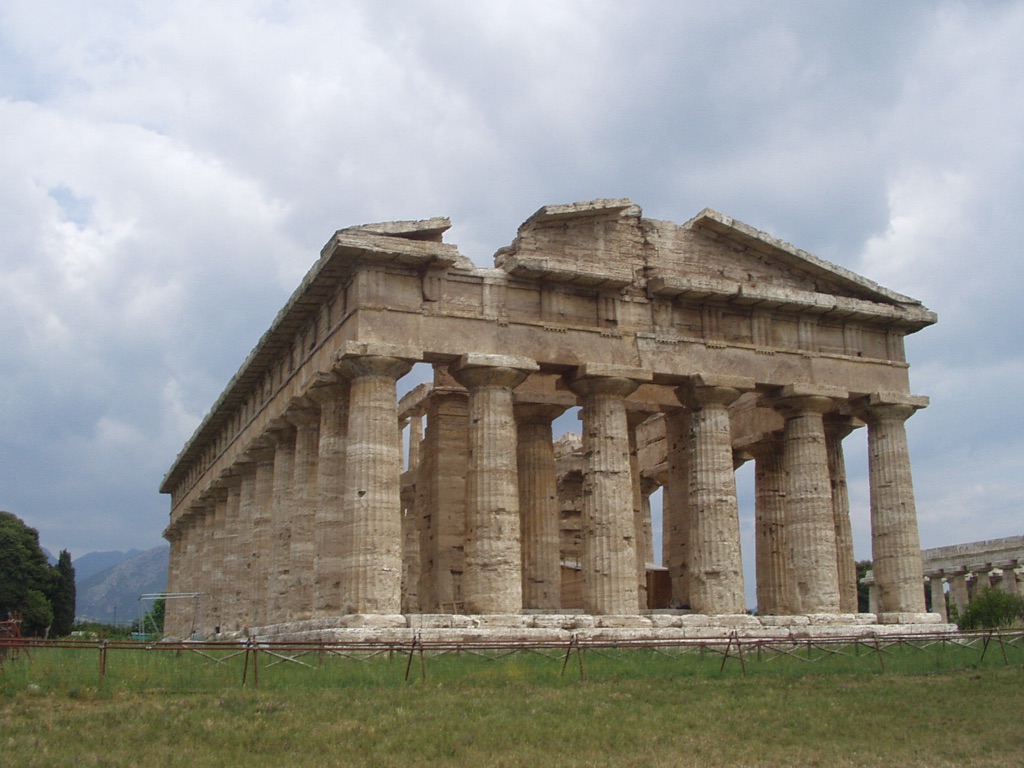
Conclusion and Sources
In conclusion, the Temple of Poseidon in Paestum is a remarkable example of ancient Greek architecture and a testament to the religious and cultural practices of the time. Its preservation and protection are crucial to our understanding of ancient Greek civilization and to the cultural heritage of humanity.

For further reading and to validate the information presented in this article, the following sources are recommended:

